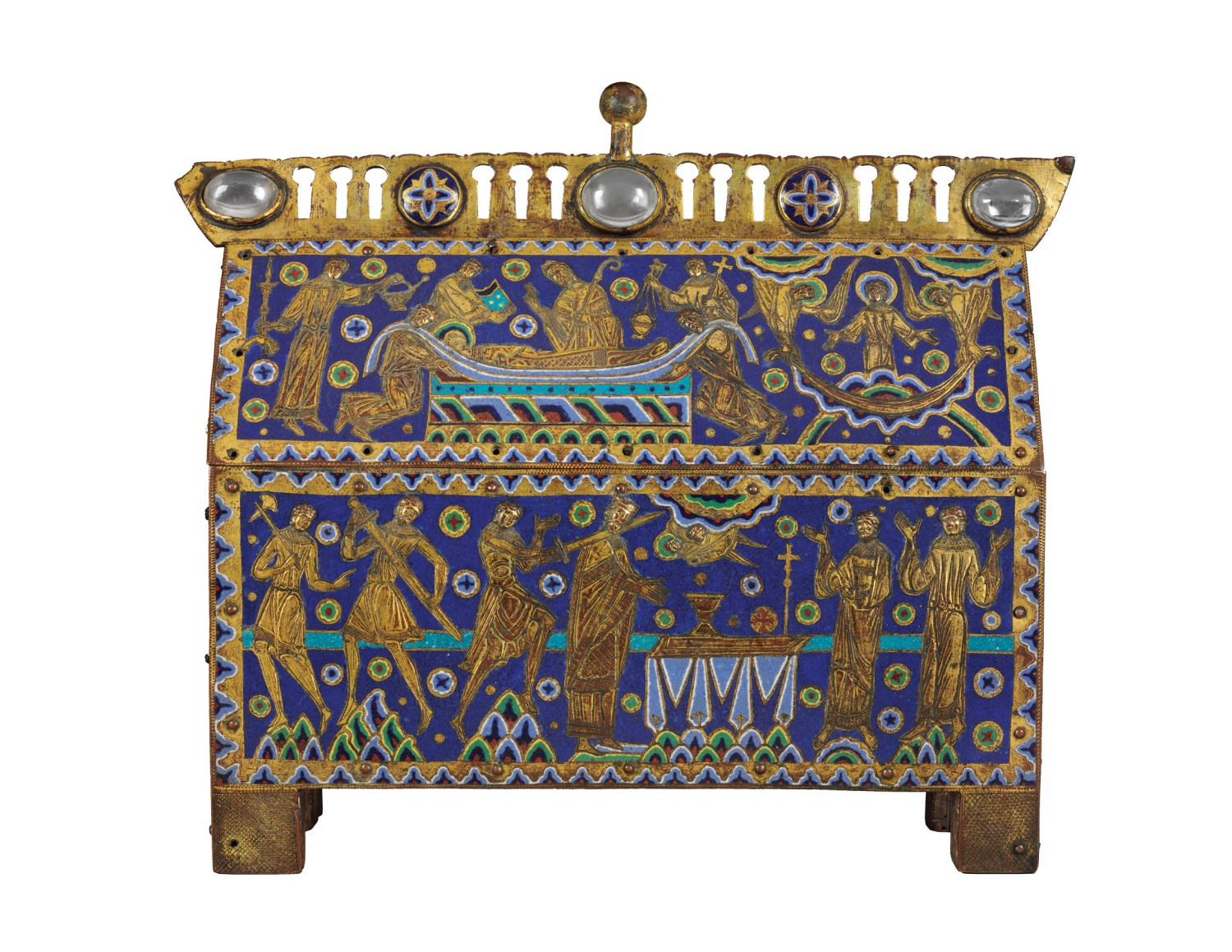The Dig - a riveting tale
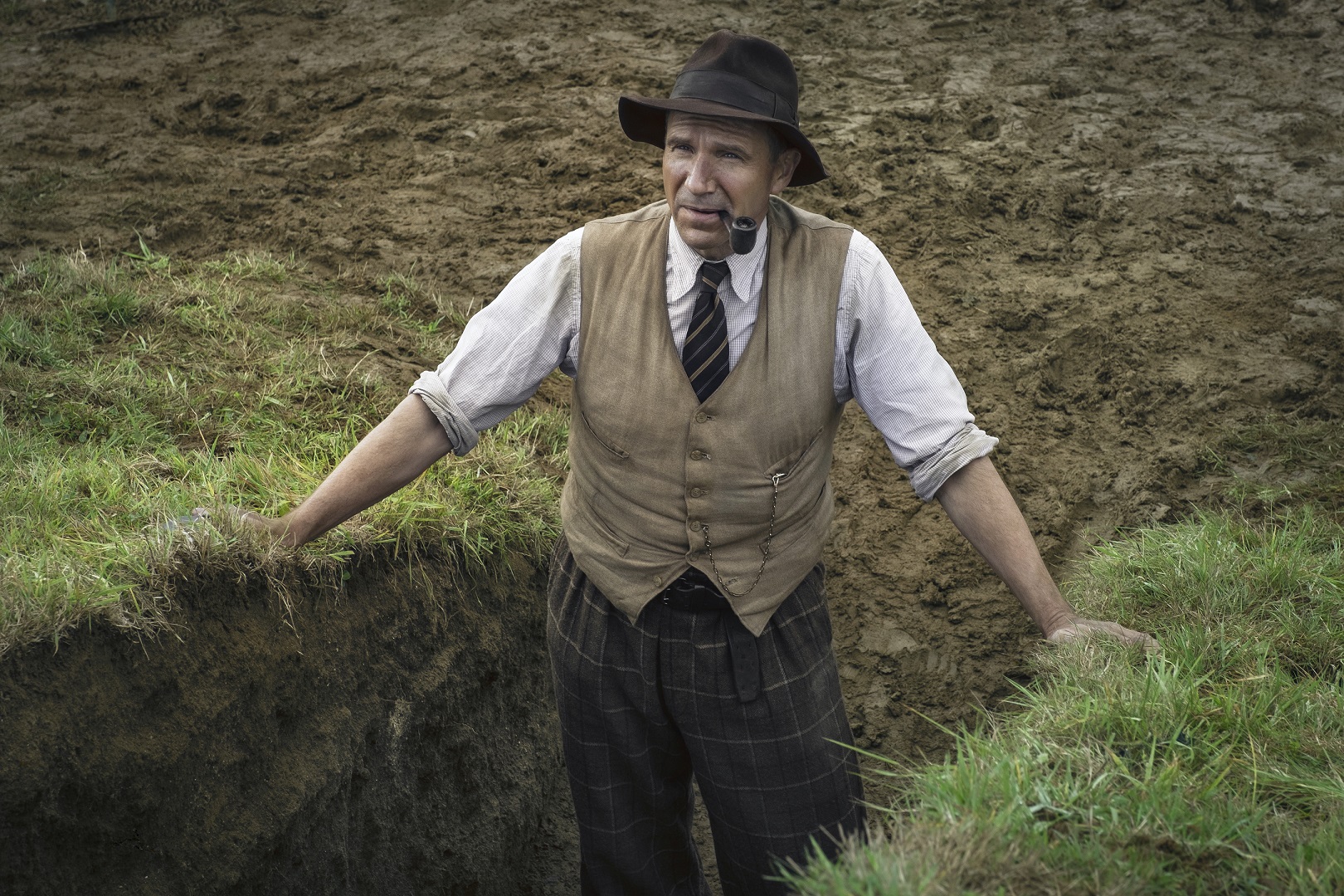
Netflix has just released The Dig, a major film about the Sutton Hoo excavation. Lindsay Fulcher unearths the story of how Basil Brown uncovered the splendid Anglo-Saxon ship burial and illuminated the so-called ‘Dark Ages’.
It was July 1937 when the first step, which led to one of the most extraordinary archaeological finds ever made in the UK, was taken at a flower show in the market-town of Woodbridge in Suffolk. Here it was that a wealthy widow named Edith Pretty happened on a local historian named Vincent Redstone. Pretty, who owned an estate named Sutton Hoo on the River Deben, had long been intrigued by a cluster of 18 ancient mounds on her property. Having travelled extensively, including around Egypt, in her early life, she had always been interested in archaeology and, when she and her husband Lieutenant-Colonel Pretty moved into Sutton Hoo House in 1926, they had talked about excavating the mounds but done nothing about it.
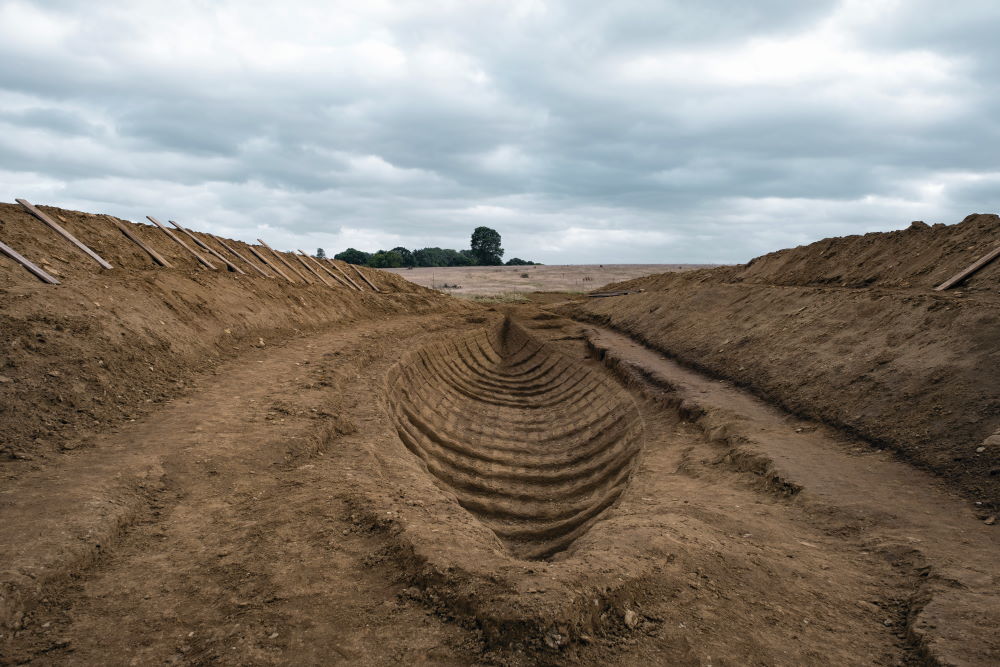
A recreation of the Sutton Hoo excavation and the imprint of the ship as it appears in The Dig. (Image: Larry Horricks/Netflix © 2021)
So why did she decide to set the wheels in motion in 1938 when Britain was on the brink of war? Was it her interest in spiritualism (she regularly consulted a medium) that moved her to take action? There are stories that her friend had seen ghostly figures moving across the mounds; whether this spurred her on to investigate their origins no one knows. Whatever the reason, she felt compelled to dig deep into the past and to have the mounds excavated.
After his conversation with Pretty, Redstone wrote to Guy Maynard, Curator of Ipswich Museum, who soon visited Sutton Hoo. Maynard suggested that a local archaeologist named Basil Brown might be the man for the job and, in the spring of 1938, Brown went to work for Mrs Pretty. He was paid a wage of 30 shillings (£1.50) a week, and given free accommodation and two men, the gardener and gamekeeper, to act as his assistants.
Despite having left school at the age of 12, Brown had taught himself Latin and was extremely knowledgeable about archaeology. He had also had much practical experience on digs and had an expert eye when identifying the different soils of Suffolk. The latter turned out to be extremely useful during the excavation of Sutton Hoo, as he could spot slight differences in the colour of the soil which betrayed the presence of previously undetected finds. Crucially, it also helped him to preserve the fragile outline of the buried ship in the sand.
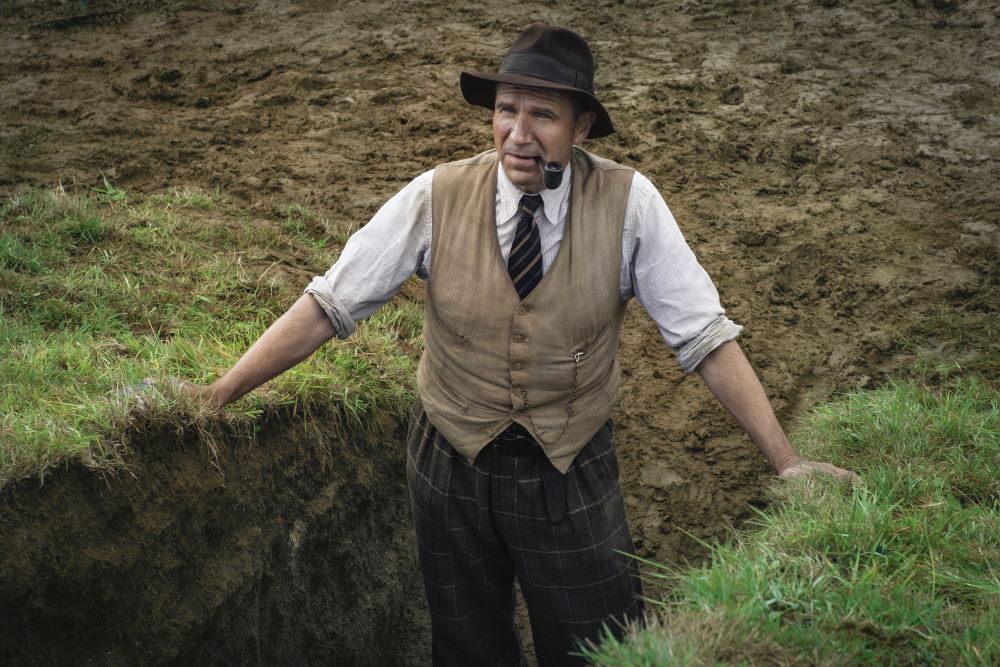
Throughout his time at Sutton Hoo, Brown kept a detailed illustrated diary of his work. He made preliminary investigations in the summer of 1938, running trenches into several of the mounds, which had been dug in previous centuries. He found a scattering of iron rivets that made him suspect the presence of a ship burial – but it was not until the following year that the real work began.
As he walked over these mysterious mounds with Pretty on 8 May 1939, he records, ‘I asked which one she would like opened and she pointed to Mound 1, the largest barrow of the group, and said: “What about this one?” And I replied it would be quite alright for me’. So the excavation proper began and, three days later, the first find was made, as Brown reports: ‘About midday Jacobs… called out he had found a bit of iron… I immediately stopped the work and carefully explored the area with a small trowel and uncovered five rivets in position on what turned out to be the stem of a ship.’ More rivets were found the next day. At this point, Brown believed the ship to be Viking in origin.
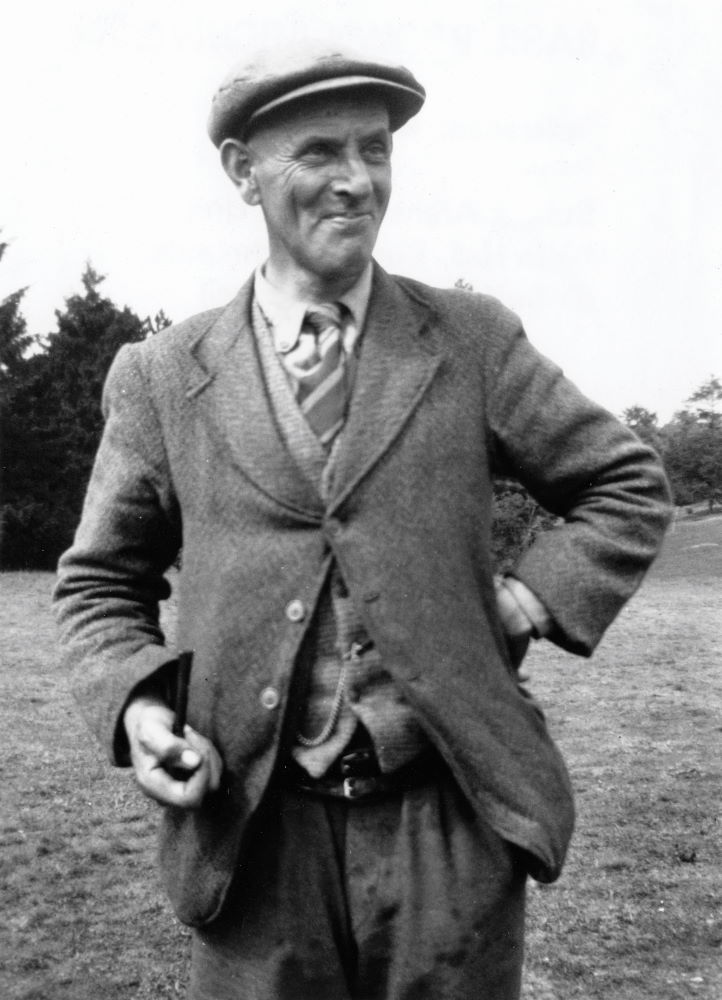
A week later he writes, ‘Mrs Pretty appears to be greatly interested.’ As well she might be, since they both knew that ship burials were rare in Britain. So began the unearthing of one of the most exciting sites in the history of British archaeology for, as Brown soon realised, this was no Viking ship – but one of royal Anglo-Saxon origin.
On 23 May, his diary reads: ‘It is a big find and as we go on the ship gets wider and we are certain of a length of at least 50 feet…’, and ‘Certainly now we have beaten the record for ships found in burial mounds in the British Isles.’ Soon professional archaeologists began to arrive at the site. The first, on 6 June, was Charles Phillips of Selwyn College, Cambridge, who declared the ship burial to be ‘a find of national importance’. He was followed three days later by Baillie Reynolds from the Office of Works. But who or what would be found in this huge ship?
Brown had a good idea of what was to come, but he would not be hurried. His diary records: ‘I believe the treasure chamber to be intact in spite of attempts at various times to dig down to it.’ And, on 29 June, he wrote: ‘The ship measurements are roughly… 82 feet long with a 15 feet beam… A ship this size must have been that of a king or a person of great importance and it is the find of a lifetime.’
Yet, although it was Brown’s discovery, a week or so later he found himself relieved of his duties. On 10 July, control of the excavation was handed over to Phillips, who assembled a team of Cambridge archaeologists, including Stuart and Peggy Piggott, to help him.
Brown accepted this change of circumstance stoically, writing in his diary: ‘Anyway, I shall not have so much bother and responsibility now, in case anything went wrong. I think we shall be able to cooperate all right, at least I hope so.’
Phillips, who also kept a diary, went on to record details of the many extraordinary finds that were made over the next few weeks, including: ‘An iron sword with gold mounts laid with hilt to the west along the middle of the boat’. The pommel was decorated with garnet cloisonné work in gold – this was a weapon fit only for a high-status man, perhaps the 7th-century Anglo-Saxon king Raedwald, whose court is thought to have been at nearby Rendlesham. By the end of July, they had unearthed 263 items of weaponry, silver plate, jewellery, and the now iconic helmet – and the dig was over.
This was also the end of the ‘Dark Ages’, as the Sutton Hoo treasures proved that, when the Roman administration left Britain around AD 400, they had not taken civilisation with them.
Of course, a new dark age was about to descend on the world after Hitler invaded Poland on 1 September of that year. In the same month, an inquest decided Edith Pretty was the rightful owner of the treasure and she decided to bequeath it to the British Museum. As a result, Winston Churchill offered her a CBE, which she declined, saying she had done nothing to deserve it. After she died in 1942, Sutton Hoo was used by the War Office, then sold. Today it is in the care of the National Trust.
As for Brown, he went on excavating sites in East Anglia for Ipswich Museum, and he always encouraged schoolchildren and local people to help with the early stages of his digs. Once a year, he made a visit to the British Museum to see the Sutton Hoo treasures. Brown died in 1977. He had not been offered an honour of any kind, nor was his contribution to this great discovery even properly credited until very recently. Like Howard Carter, another great British archaeological hero, he was seemingly debarred from receiving state honours by the class system and intellectual snobbery. Basil Brown’s name is now credited and appears beside that of Edith Pretty in the British Museum, but the unique contribution he has made to archaeology has never been formally acknowledged.
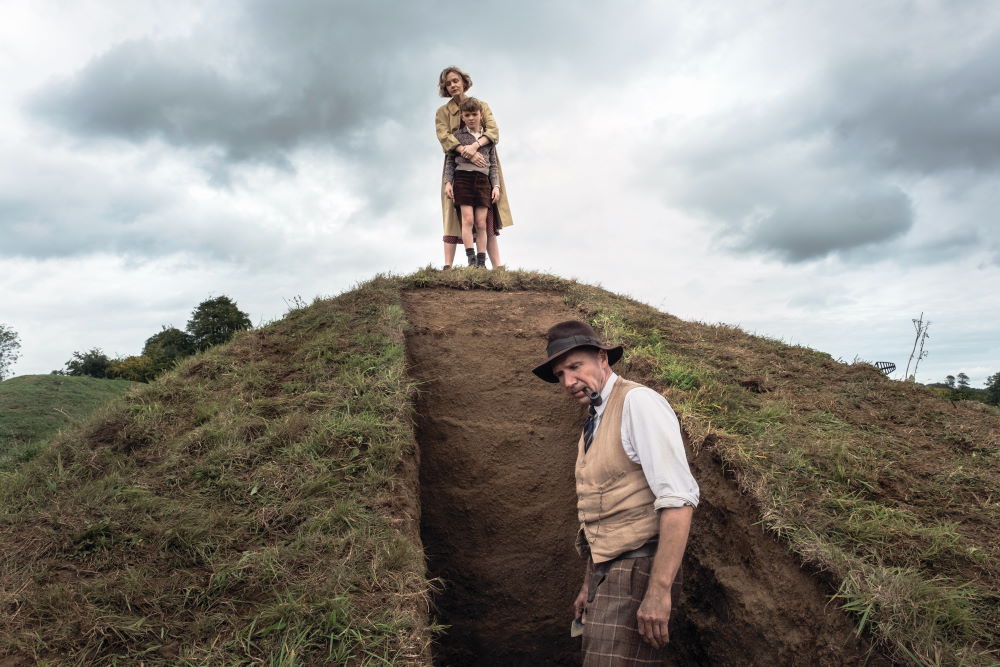
Ralph Fiennes as Basil Brown, Carey Mulligan as Edith Pretty, and Archie Barnes as her son Robert, at the recreated Sutton Hoo mound in The Dig. (Image: Larry Horricks/Netflix © 2021)
Perhaps this did not bother Brown, but I think he would have been amazed and perhaps amused to hear that he has now achieved international status as the star of the new Netflix film, The Dig – and he is played by the classic actor and Hollywood Bond star Ralph Fiennes. ‘Tha’s a rummin…!’, as they say in Suffolk.
A gentle, poignant, utterly English film is just what we need in these lockdown days of boredom and despair. Based on the novel of the same name by John Preston, The Dig is nuanced and beautifully acted. With Fiennes playing Brown and Carey Mulligan as Edith Pretty, it tells the story of the discovery of the Sutton Hoo ship-burial in 1939. That, in itself, is a fascinating tale but the various characters involved, the timing of the excavation, and the oh-so-English tensions that class, status, and academic rivalry bring, all give us a glimpse of mid-20th-century, as well as Anglo-Saxon, England.
Fiennes’ portrayal of Basil Brown is much more than a great performance: it is a deeply affectionate embodiment of the sort of old Suffolk boy in a tweed cap and jacket that could once be seen in every local pub. Fiennes has a great respect for the self-educated Brown: ‘he was a very intelligent man and entirely self-taught… he had a passion for history, he had a deep connection to the land and to the past. He understood how everything fitted together… He was not a treasure-hunter. In the film, he is suspicious of Mrs Pretty at first, because he is afraid that she is only interested in the grave goods as treasure to be exploited, but he sees them as objects that allow the past – our ancestors – to speak directly to us.’
Fiennes, who was born in Ipswich and lived in Suffolk until he was six, was at great pains to get the accent right. His coach Charlie Haylock warned him about slipping into West Country ‘pirate’ dialect and Fiennes took it to heart. The result is near perfection.
As Edith Pretty, Mulligan is careful to give her dignity, sensitivity, and a slight air of melancholy. Her husband Frank Pretty died in his 50s, leaving his widow to bring up their four-year-old son Robert (sweetly played by Archie Barnes). Her health is declining and war is coming, but she, like Brown, is stubbornly determined to dig down into the past.
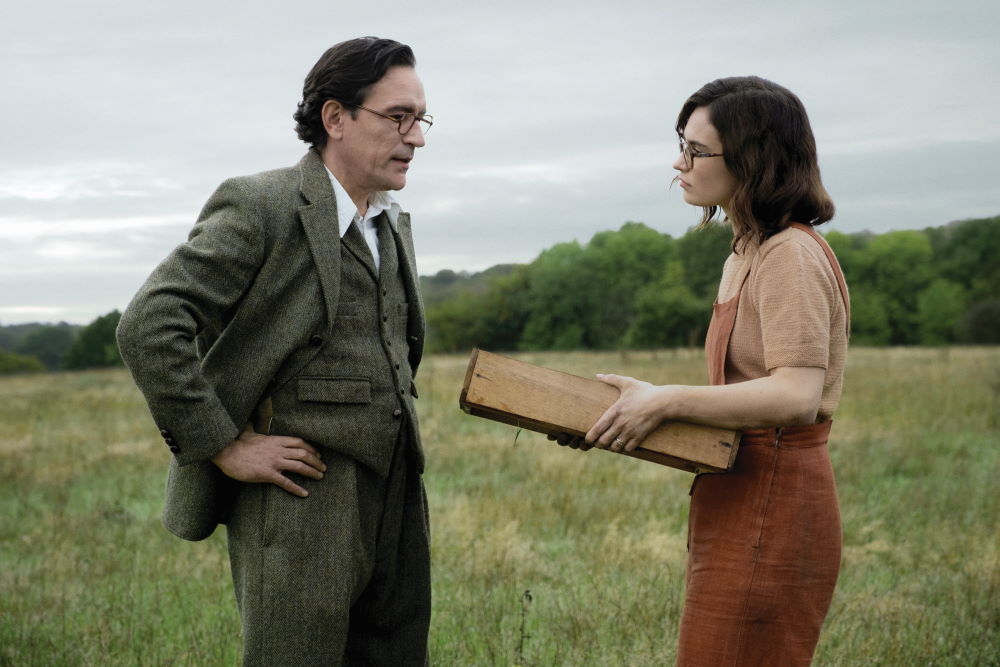
Ken Stott plays the Cambridge academic Charles Phillips, Ben Chaplin and Lily James are husband-and-wife archaeologists Stuart and Peggy Piggott (Peggy is the aunt of John Preston, and inspired Preston’s book), while dashing Johnny Flynn is Edith Pretty’s fictional cousin, Rory Lomax, and the love interest for lonely Peggy. As Edith tells her: ‘Life is very fleeting. It has moments you should seize.’
In an increasingly virtual world, The Dig seems to help us to make an organic connection with the past, one that Basil Brown and other archaeologists feel in their bones.
- The Dig is available now on Netflix
Recreating the Sutton Hoo Ship
Just across the river from the burial site, the Sutton Hoo Ship’s Company is working to accurately recreate the huge Anglo-Saxon vessel that was hauled up from the River Deben to its final resting-place.
Based on the quayside in Woodbridge, our charity (whose trustees include Martin Carver, excavator of Sutton Hoo during the 1980s, and Julian Whitewright, maritime archaeologist at the University of Southampton) was set up in 2016 with the aim of recreating the ship, launching her on the river, and taking her to sea. This experimental archaeology project will teach us much about Anglo–Saxon life, including boat-building, trade, and seafaring. We are using materials, techniques, and tools Anglo-Saxons would have used, and recording every stage of the process. This ship was over 27m long, about 5m high from keel to bow, made of seven tons of green oak and one ton of copper/iron, and held together with 3,598 metal rivets. The replica will be all of these things too, and, like the original, powered by up to 40 people at a time.
Our team of volunteers, supervised by a shipwright and maritime archaeologists, have so far constructed a support for the keel. We have felled the first of about a dozen oaks to form the main part of the keel and planks. It will take two years to get from where we are to a ship ready for sea trials, and we are also working on a research programme and community engagement, as well as recruiting and training 120 rowers (three shifts of 40 for maximum power on the ship), which all requires funding.
Trialling the completed ship, we will take her on river and sea fully to understand questions about her speed, how she was rowed, how much cargo she could carry, and if she can cross the North Sea. We hope to determine whether the ship ever had a mast and sail. There is no archaeological evidence for this, but it would be exciting to see whether it is technically possible to achieve it. Based, as we are, across the river from the Sutton Hoo site, we are left with no doubt that it was quite a feat to haul the ship from the muddy banks of the Deben up to the Hoo; we hope to recreate this as well.
Simon Steel
Visit www.saxonship.org for more information on, or to sponsor, the Sutton Hoo Ship’s Company project.

